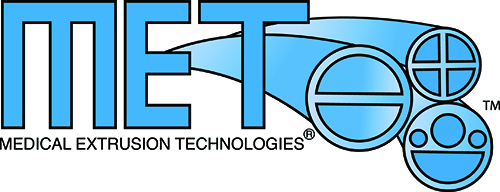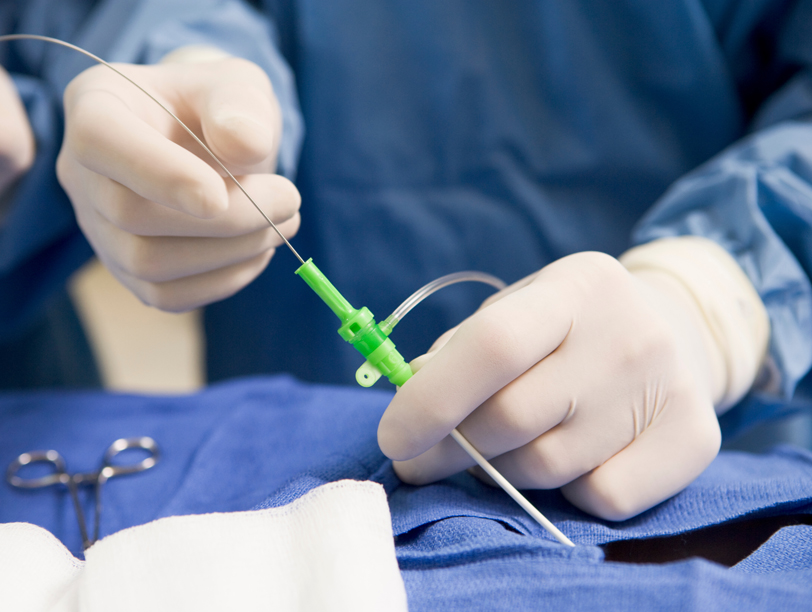The demand for catheter-based delivery systems is accelerating. From interventional cardiology to neurovascular navigation, today’s catheters are no longer simple tubes—they’re multi-functional, high-precision devices designed to perform in increasingly complex clinical environments. But the path from concept to commercial catheter is fraught with manufacturing, material, and regulatory challenges.
Here, we explore what makes catheter manufacturing uniquely difficult, strategic approaches to de-risking development, and the trends redefining what OEMs expect from their manufacturing partners—including the role of component specialists like Medical Extrusion Technologies (MET).
Looking for catheter extrusion expertise? Explore MET’s capabilities in custom catheter tubing.
Why Catheter Manufacturing Is So Challenging
Catheter systems serve increasingly specialized functions—from ablation and imaging to stent deployment and robotic navigation. That complexity creates a convergence of three distinct challenges:
1. Design Complexity
Modern catheters often integrate:
- Multi-lumen shafts
- Steerable tips
- Embedded conductors or sensors
- Balloons for dilation or drug delivery
- Hybrid material layering for torque, push, and flexibility
These features must co-exist in profiles often smaller than 2 mm in diameter, while maintaining biocompatibility and mechanical performance. Brian Frechette, Operational Strategist at MET explains:
“Extrusion components are typically a big part of medical device delivery system builds. Quality and consistency are critical to the success of the customer’s end product.”
2. Material and Manufacturing Limitations
The challenge isn’t just which materials to use—it’s how they perform during and after fabrication. Advanced polymers like PEBAX®, TPU, and Nylon offer tailored durometers and flexibility, but behave differently under:
- Secondary processes like laser machining or tipping
- Bonding with electrodes, sensors, or balloons
- Sterilization (more on that later)
Sourcing the right formulation—and validating how it holds up during processing—often defines whether a design is viable or not.
3. Regulatory and Quality Expectations
Catheter systems, particularly those intended for Class III applications, require:
- Full traceability of materials and components
- ISO 13485–aligned documentation
- Consistent dimensional control at sub-millimeter levels
Miss a single tolerance or material batch ID, and a promising design may stall before reaching clinical use.
How to De-Risk Development With Strategic Solutions
While these challenges are real, they’re not insurmountable. OEMs developing catheter-based systems can take a phased, risk-aware approach to mitigate design and production pitfalls.
Phase 1: Design for Extrusion, Not Just Function
Start by aligning your device concept with extrusion realities:
- Design lumens that can be extruded cleanly and consistently
- Choose materials early, with sterilization and bonding compatibility in mind
- Work with component manufacturers who can advise on feasibility, not just output
“We work one-on-one with customers to facilitate rapid prototyping throughout the development process,” notes Frechette. “Once a final design is determined, we provide consistent quality tubing that meets the design and functional requirements of the customer.”
Phase 2: Rapid Prototyping & Functional Testing
Prototype early and often—but not in isolation. Work with extrusion partners who offer:
- Custom die and tool development
- Short lead times for testable builds
- Documentation that tracks from iteration to production
Phase 3: Prepare for Process Validation
Before scale-up:
- Verify tolerances using ASTM-aligned testing (e.g., tensile strength, elongation, wall thickness)
- Identify how extrusion impacts catheter tipping, bonding, or reinforcement
Phase 4: Coordinate with Final Assembly & Sterilization
Yes—sterilization must be considered early. Radiation (gamma or E-beam) may embrittle polymers like TPU, while EtO gas can leave chemical residuals in long, narrow lumens. Nigel Syrotuck, Project Analyst at StarFish Medical says in a recent article: “While radiation sterilization effectively penetrates device walls, it can alter polymer properties, making materials more brittle or discolored.”
Matching materials to sterilization methods is a strategic—not reactive—design move.
Future Catheter Manufacturing Trends
Innovation at the catheter level is expanding rapidly. These trends are influencing not just design—but the choice of component suppliers and manufacturing partners.
1. Micro Assembly & Miniaturization
As catheters move deeper into the vasculature, precision increases and tolerances tighten. Whether delivering neurovascular therapies or pediatric interventions, extrusion components must support:
- Wall thicknesses under 0.005″
- Lumen concentricity within microns
- Seamless integration with micro-sensors or flex circuits
2. Embedded Electronics and Sensors
Smart catheters are now standard in electrophysiology, ablation, and imaging. Embedded elements include:
- Temperature or pressure sensors
- Fiber optic lines for OCT or IVUS
- Conductive pathways for robotic-assisted navigation
These technologies require extruded tubing that is both functionally sound and mechanically stable under real-world stresses.
3. Nitinol Integration
Shape-memory alloy integration, particularly nitinol, enables steerable catheters, collapsible frames, and self-expanding stents. Nitinol is challenging to process—but extrusion partners must account for how tubing interacts with:
- Laser-cut nitinol tubes
- Braided nitinol wire structures
- Variable durometer overlays
Even if the extrusion doesn’t include the nitinol, it must perform with it—under torque, heat, and pressure.
The Strategic Role of Component Partners Like MET
In a catheter market defined by complexity, customization, and speed, OEMs need more than a supplier—they need strategic input from partners who understand the downstream impact of their tubing components.
MET specializes in:
- Fully custom medical-grade plastic extrusion
- Material compatibility consulting
- Rapid prototyping aligned with customer CAD
- ASTM-compliant tensile and dimensional testing
“We manufacture what the customer designs, versus telling the customer what we have that’s available for them to use,” says Frechette. “Nearly all the work we do is custom to some extent.”
Up Next: Onshoring: A Strategic Lever To Pull For Medtech Manufacturing Companies
Catheter Manufacturing Innovation Starts with the Right Partner
Catheter systems aren’t getting simpler. From miniaturization and embedded tech to evolving regulatory expectations, manufacturing innovation now starts long before a product reaches assembly. It starts with the tubing—and with the partner who understands what’s possible, what’s proven, and what’s next.








Comments are closed